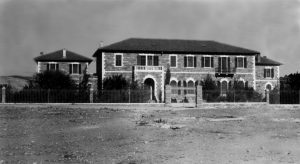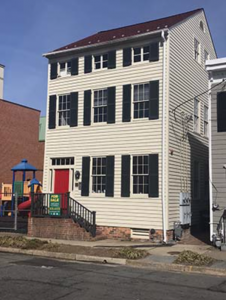
A History of ASOR: The 1970’s to the Present
By Meagan Shirley and Joe D. Seger
The last article on ASOR’s history concluded with the foundation of ACOR and the W.F. Albright Institute of Archaeological Research. This article encompasses ASOR’s history from the 1970’s to the present.
The Jerusalem school was named the W. F. Albright Institute in 1970, but the transfer of property title from ASOR to the AIAR Board occurred only in the mid-1990’s. Between 1970 and 1990 ASOR continued to provide support in its budget for each of the overseas centers as the Boards of the centers worked their way to independence. ASOR’s offices in the United States assumed responsibility for the entire organization’s administrative and academic activities. ASOR had central offices at Yale and elsewhere from much earlier which assumed responsibility for administration.
Beginning in 1966, ASOR made its home at the Harvard Semitic Museum under the leadership of President G.E. Wright. ASOR maintained offices in Cambridge until the appointment of James A. Sauer in 1982, who worked at the University of Pennsylvania. The appointment of Sauer as ASOR President prompted another move to Philadelphia where ASOR took up residence at 4243 Spruce Street. During its tenure in Philadelphia, ASOR thrived due to its close proximity to the university. In 1984 in conjunction with the University Museum, ASOR received an NEH Grant to fund Summer Institutes in Near Eastern Archaeology. These consisted of summer programs taught by ASOR members and leading scholars in the field of archaeology.
Following a six-year tenure at Johns Hopkins University, ASOR moved to Boston University in 1996. 656 Beacon Street in Boston remained the home of ASOR for 20 years until Boston University decided to sell the building in which ASOR was located. A New Office Committee was formed and headed by Board Chair Richard Coffman to decide what the best course of action should be for ASOR. It was determined that would be to, “purchase a facility to serve as ASOR’s permanent and independent home. The Board has also determined, again through extensive discussion and through site visits, that the optimal location for our new office is in the Washington, D.C., area” (Ackerman 2018).For the first time in ASOR’s history, the organization is independent of the various universities’ complimentary office space. Through the generous donations of our membership, ASOR was able to purchase an office space outside of Washington, D.C. in Alexandria, VA. This new building was named the James F. Strange Center in honor of longtime member and trustee, Jim Strange. The Strange Center was purchased through a rigorous campaign to raise the funds to purchase the office. Through the generous donations of our membership, ASOR was able to raise the full cost of ASOR’s new home.
Beginning with its time in Philadelphia, ASOR greatly expanded its scope, including new Cultural Heritage Initiatives, expanding oversight of excavation practices, increasing scholarship opportunities for students to travel to the field, and focusing on the dissemination of scholarly research through the Annual Meeting. Meetings had taken place intermittently throughout the 1960s and 1970s in conjunction with other organizations, primarily the Society for Biblical Literature (SBL). ASOR continued meeting with SBL until 1997 when it was decided through a membership meeting the previous year in New Orleans to hold an independent meeting. The 1997 Annual Meeting in Napa Valley was successful with 350 participants (Seger 2001: 68). However, it was decided to hold future meetings in the same city and time frame as the SBL conference due to the many members that attended both. ASOR has held its own Annual Meeting every year since. In 2020, ASOR had to make the difficult decision to cancel its in person meeting in Boston due to the Covid-19 pandemic. This decision was deemed necessary for the safety and well-being of ASOR’s many members. As of the writing of this article, ASOR is working to host a virtual meeting through which many scholars and researchers can still present their research. ASOR looks forward to seeing its members in-person again at the 2021 Annual Meeting in Chicago.
Sources:
Ackerman, Susan. 2018. ASOR is on the Move. Electronic Document, https://www.asor.org/news/2018/04/asor-move, accessed July 20, 2020
Meyers, Eric M. and Joe D. Seger. 2001. ASOR: A History of the American Schools of Oriental Research. In An ASOR Mosaic, edited by Joe D. Seger, pp. 2-103. American Schools of Oriental Research, Boston.
American Society of Overseas Research
The James F. Strange Center
209 Commerce Street
Alexandria, VA 22314
E-mail: info@asor.org
© 2025 ASOR
All rights reserved.
Images licensed under a Creative Commons Attribution-NonCommercial-ShareAlike 4.0 International License

